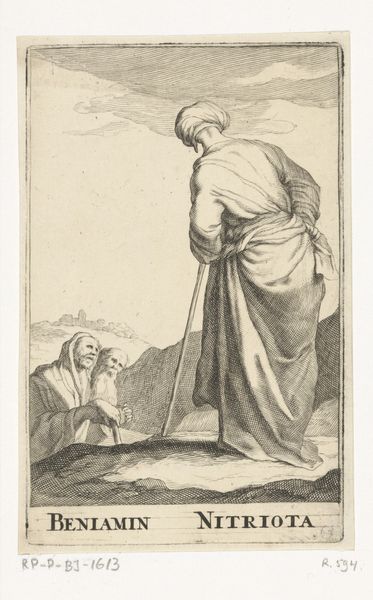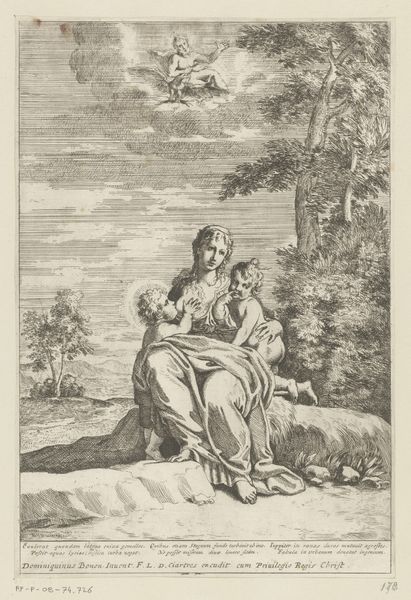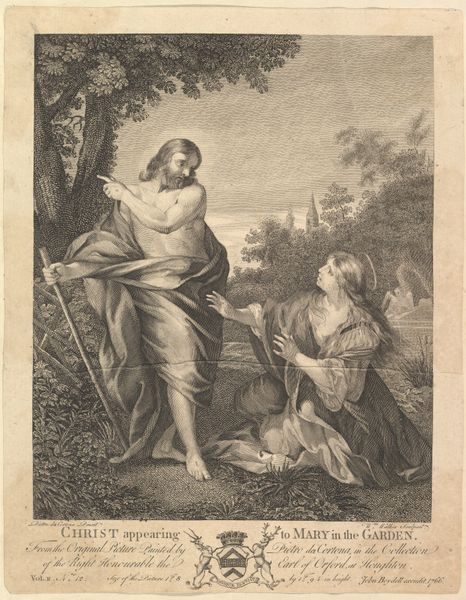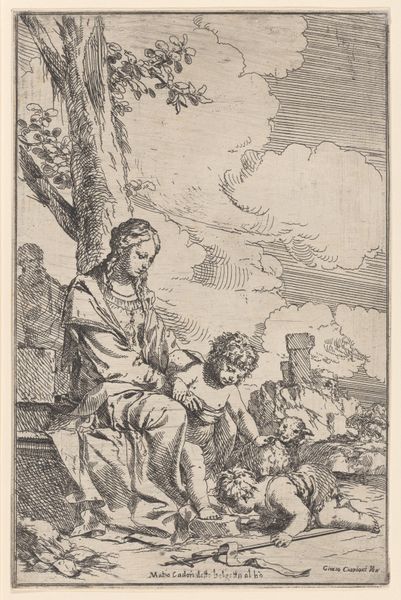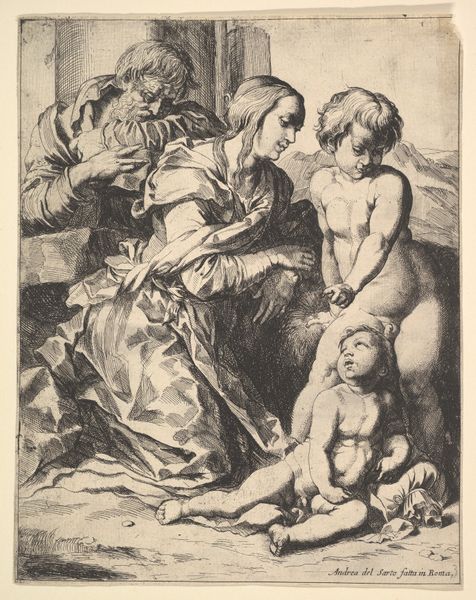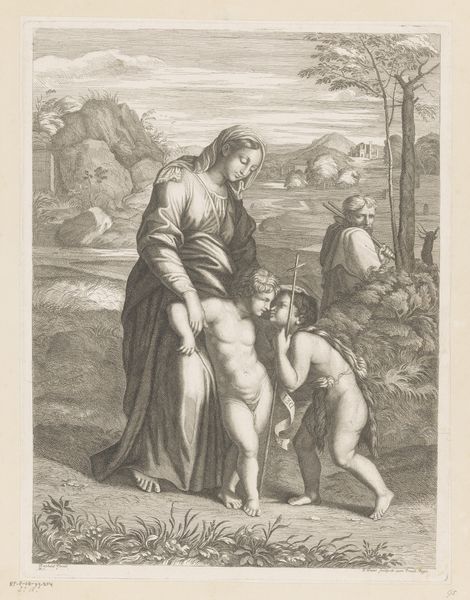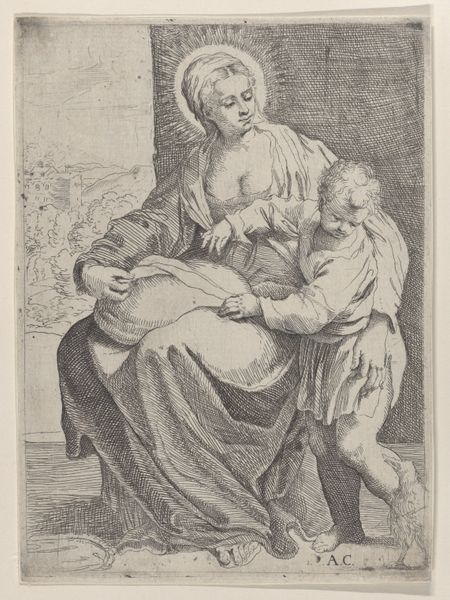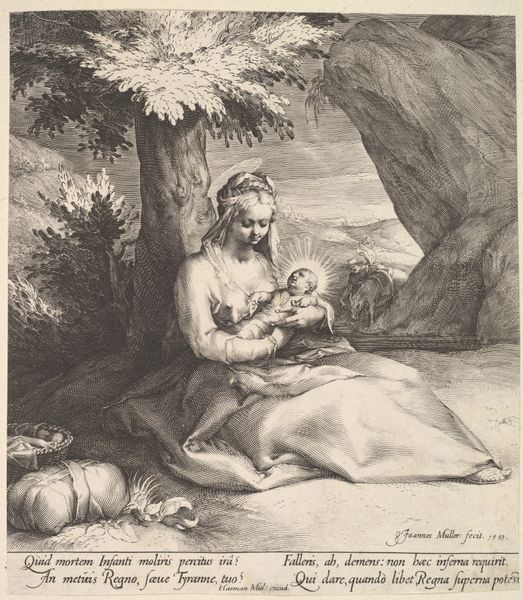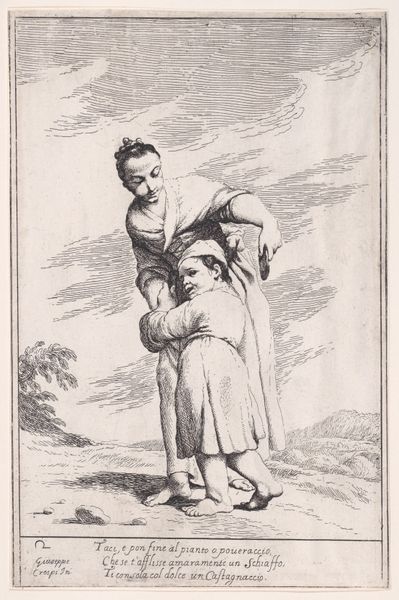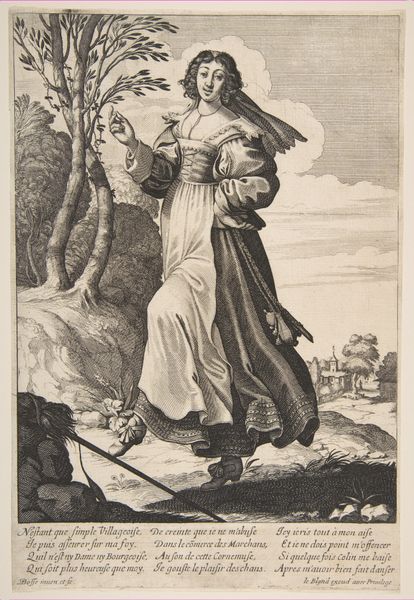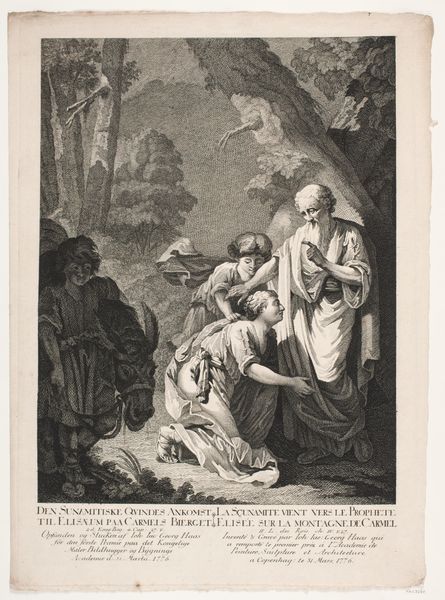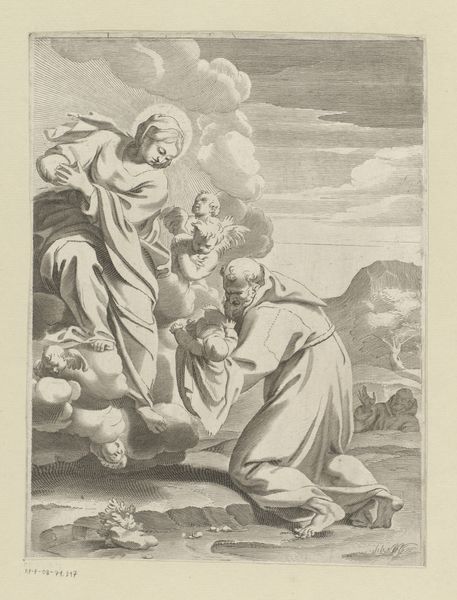
A young girl with a sleeping shepherd 1685 - 1747
0:00
0:00
drawing, print, engraving
#
drawing
#
baroque
# print
#
old engraving style
#
landscape
#
figuration
#
genre-painting
#
engraving
Dimensions: Sheet: 9 7/16 × 6 13/16 in. (23.9 × 17.3 cm)
Copyright: Public Domain
Curator: Let’s turn our attention to “A young girl with a sleeping shepherd,” an engraving by Giuseppe Maria Crespi, dating from between 1685 and 1747. Editor: This engraving is immediately striking! There’s an undeniable sense of… quiet intensity, maybe? It's interesting to observe its textures and its attention to detail, given the medium. What can you tell me about the sociohistorical background for Crespi's work here? Curator: Crespi worked in Bologna during a period of significant social and economic change. Genre paintings like this one, depicting everyday life, were becoming increasingly popular among the rising middle class. His style reflects an engagement with the naturalistic and informal aspects of life, also echoed in Dutch paintings from that era. However, there are undercurrents in this image which can be observed through class and gender relationships: note the girl’s active, almost menacing pose juxtaposed with the sleeping, perhaps vulnerable shepherd. Editor: Good point. Let’s consider what it means that we can view it today as a “print,” designed to be reproduced and circulated fairly widely in its day. It speaks to access and consumption, right? This wouldn’t be the same as owning a singular painted canvas. And how does that shift in the relationship between the image and the viewer shift power dynamics within a patriarchal society? Curator: Precisely. Engravings democratized art to an extent, reaching a broader audience that may have been barred from viewing high art restricted in wealthier households. Think about the labor involved—the copperplate etching, the press, the inking and wiping... each stage had a role and a worker involved, whose hand and position shaped the final result. It highlights how these works moved through different social strata. Editor: Absolutely, Crespi’s attention to detail isn't just aesthetic, it’s informational too. His commitment to craft elevated a certain subject that might not have been deemed worthy in another era. Considering how wealth and gender intersect, you start wondering what narratives are really at play when seeing this servant with an authoritative air tending to her worker… Curator: Indeed, in some interpretations this raises compelling points of enquiry relating to gender, sexuality and subversion, complicating the surface depiction of mere idyllic leisure. Editor: Exactly. Crespi has definitely created a space ripe with historical nuances we might not consider at first glance. I wonder how that context transforms the relationship we have to ownership over materials… Curator: That’s an incisive remark on the broader shifts of material availability at the time.
Comments
No comments
Be the first to comment and join the conversation on the ultimate creative platform.
